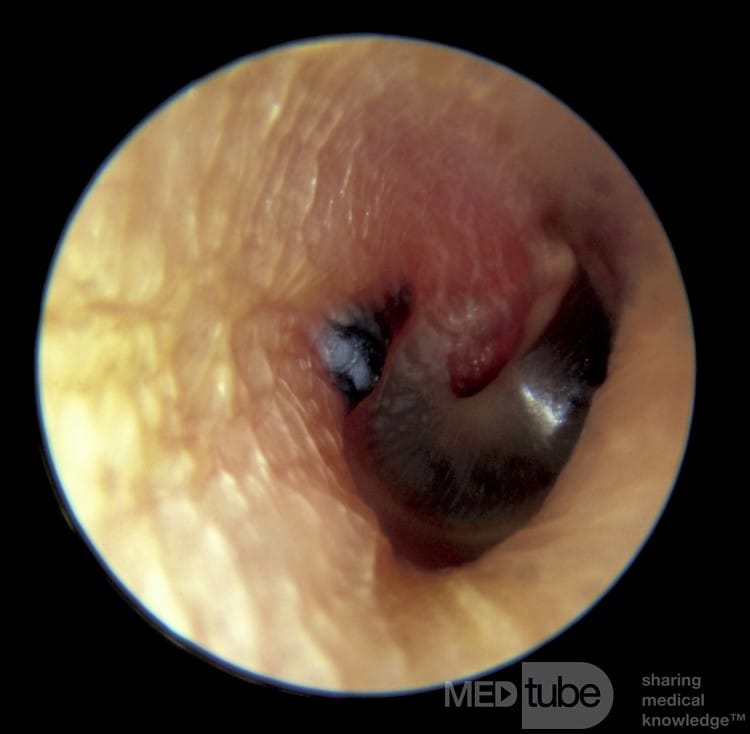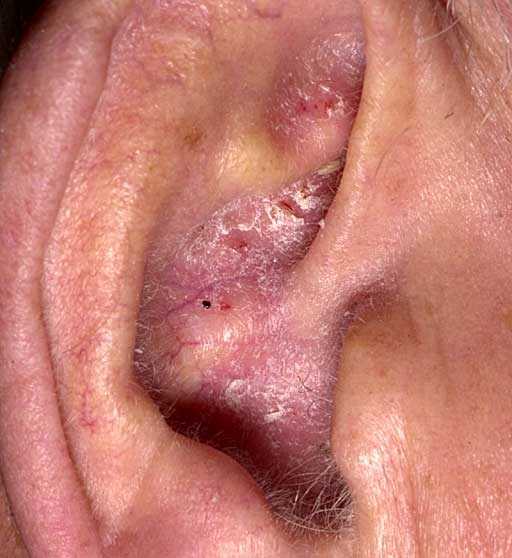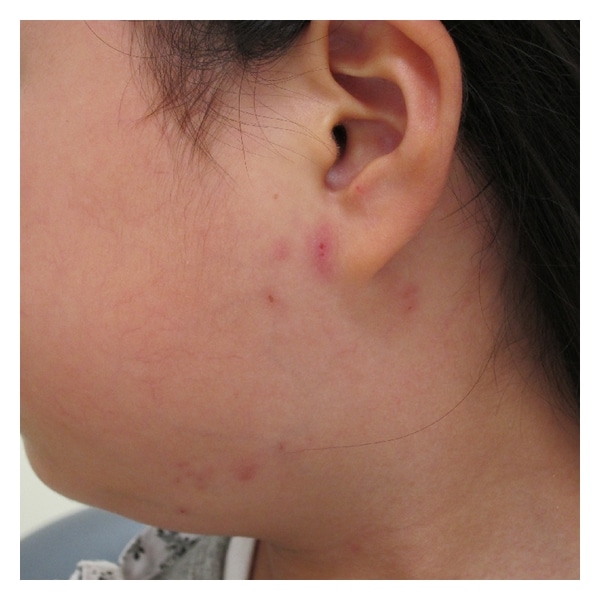Shingles In The Ear Ramsay Hunt Syndrome
Shingles, also known as Herpes zoster, is a painful condition that is caused by the same virus that causes chicken pox. Shingles involves the nerve pathways in the area affected, and is characterized by skin blisters in the early stages of the infection. Some people also subsequently experience strange nerve sensations such as burning, itching, stabbing, numbness or tingling. And while the typical course of a shingles infection lasts two to three weeks, some people may develop Post-Herpetic Neuralgia, nerve pain that lasts long after the blisters have disappeared.
Shingles usually occurs on the chest, face, back, leg or rear. A less common occurence is Herpes zoster oticus, or shingles in the ear. Known as Ramsay Hunt Syndrome, the condition is characterized by intense ear pain, a rash around the ear, mouth, face, neck, and scalp, and paralysis of facial nerves. Other symptoms may include hearing loss, vertigo, and tinnitus. The tongue may lose taste sensation dry mouth and eyes may also occur.
Unfortunately, some people experience long-term complications from Herpes zoster oticus. They may suffer a permanent hearing loss or facial paralysis. Vertigo may last for days or even weeks. Treatment may include medications such as antiviral drugs or corticosteroids.
For more information on Ramsay Hunt Syndrome, click here:
How Does It Occur
If you have had chickenpox, you are at risk for later developing shingles. After you recover from chickenpox, the chickenpox virus stays in your body. It moves to the roots of your nerve cells and becomes inactive . Later, if the virus becomes active again, shingles is the name given to the symptoms it causes.
What exactly causes the virus to become active is not known. A weakened immune system seems to allow reactivation of the virus. This may occur with normal aging, immune-suppressing medicines, or another illness, or after major surgery. It can also happen as a complication of cancer or AIDS or treatment of these illnesses. Chronic use of steroid drugs may trigger shingles. The virus may also become active again after the skin is injured or sunburned. Emotional stress seems to be a common trigger as well.
Recommended Reading: How Long Does The Nerve Pain Of Shingles Last
Contact Dermatitis Can Cause A Rash And Blisters
Contact dermatitis can also cause a rash, blisters, itching, and burning, per the ACAAI. It occurs when the skin comes into contact with an irritant or an allergen, such as soaps, laundry detergents, shampoos, metals, medications, and more. Allergens like poison ivy, poison oak, or poison sumac can cause red, itchy rashes that may include blisters. Treatment can offer relief and aid healing.
Also Check: What Are The Chances Of Getting Shingles
What Is The Connection Between Chickenpox & Shingles
Chickenpox is a very contagious disease that causes a blister-like rash typically all over the body, itching, and fever. Before the chickenpox vaccine, nearly everyone in the United States got chickenpox. The chickenpox virus can reactivate, causing shingles. People with shingles may have pain, itching, tingling, and blisters in one area of the body that can last for weeks.
You may be among the 99% of people over the age of 50 years who is at risk for shingles, since the virus that causes chickenpox also causes shingles when it reactivates. One in three people will get shingles in their lifetime.
Chickenpox
The typical shingles red rash or blisters occur after pain, itching, and tingling. They are usually limited to one side of the face and body.
Shinglesrash and blisters appear on one side of the face extending to the scalp and ear.
If the rash involves the ear, it can lead to hearing loss, imbalance, and weakness of the facial muscles. Shingles rash on the scalp causes pain while combing or brushing and bald patches. Shingles can occur in the mouth and are usually very painful, causing pain while eating and change in taste.
- Shingles of the eye and forehead
Rash and blisters appear around the eye, over the eyelids and one side of the forehead, extending to the tip of the nose. Patients present with burning or throbbing in the eye, with watering of the eyes, swelling, and blurred vision.
- Shingles on the waist and back
Who Should Not Get The Vaccine

Do not get the shingles vaccine if:
- You have a severe allergic reaction, such as anaphylaxis, to any ingredient of a vaccine or to a previous dose of Shingrix
- You have shingles now.
-
You are sick with an illness and a fever of 101°F or higher.
- You should also consider delaying the vaccine if you are pregnant or breastfeeding. Not enough is known about its safety for expectant and lactating women.
- You have had a negative test for varicella this would be uncommon for adults eligible for the vaccine, as most adults worldwide ages 50 and older have been exposed to the virus. You do not have to be tested before getting the vaccine.
You May Like: Am I At Risk For Shingles
Symptoms Of Shingles In The Eye
When you have shingles in the eye, the blistering rash will form on your eyelids, forehead, and possibly on the tip or side of your nose. This rash might show up at the same time as the skin rash, or weeks after the skin blisters have gone away. Some people only have symptoms in their eye.
Along with the rash, you might have:
- burning or throbbing pain in your eye
- redness around and in the eye
You might also have swelling in parts of your eye, such as:
- your retina, which is the light-sensitive layer in the back of your eye
- your cornea, which is the clear layer in the front of your eye
If you have one or more of these symptoms, call your primary care doctor or an eye doctor for an appointment. The sooner you get treatment, the less likely it is that youll have long-term complications.
Read Also: How To Cure Shingles Naturally
Who Does Ramsay Hunt Syndrome Affect
Ramsay Hunt syndrome can affect anyone whos had chickenpox or shingles. Most cases occur in people age 60 and older. The condition rarely affects children but has been diagnosed as young as three years old. People who are immunocompromised are more likely to be affected and generally experience more severe symptoms. Theyre also less likely to have a complete recovery.
Don’t Miss: Am I Eligible For Shingles Vaccine
Other Complications Of Shingles
If the shingles rash appears around the eye or forehead, it can cause eye infections and temporary or permanent loss of vision. If the shingles virus attacks the ear, people may develop hearing or balance problems. In rare cases, the shingles virus may attack the brain or spinal cord. These complications can often be prevented by beginning treatment for shingles as soon as possible.
How Can You Prevent Spreading The Virus
You cant give shingles to someone else, but the varicella-zoster virus is very contagious. If you have shingles and you expose someone else who has not had chickenpox or the chickenpox vaccine, you can give them the virus. Theyll get chickenpox, not shingles, but this puts them at risk for shingles later on.
Youre contagious when your blisters are oozing, or after they break and before they crust over. Do the following to avoid spreading the virus to others:
- Keep your rash covered, especially when the blisters are active.
- Try not to touch, rub, or scratch your rash.
- Wash your hands thoroughly and often.
Avoid contact with people whove never had chickenpox or the chickenpox vaccine, especially:
Also Check: What Is Shingles And What Causes It
Complications And Facial Paralysis
Failure to treat herpes zoster oticus can result in serious complications. This can result in hearing loss or even deafness. Peripheral fascial palsy can also occur as a complication of herpes zoster oticus. This means that the muscles responsible for facial expressions are weak or completely paralyzed on one side. In about 80% of the cases, however, healing occurs.
Further complications can arise from the involvement of various nerves. If the vestibulochochlear nerve is affected, hearing loss or deafness can occur, but also ringing in ears , vertigo and nausea can occur. If other cranial nerves are affected, it can have effects such as:
- Hiccups or difficulty swallowing
Preventing The Virus Spreading
If you have the shingles rash, do not share towels or flannels, go swimming, or play contact sports. This will help prevent the virus being passed on to someone who has not had chickenpox.
You should also avoid work or school if your rash is weeping and cannot be covered.
Chickenpox can be particularly dangerous for certain groups of people. If you have shingles, avoid:
- women who are pregnant and have not had chickenpox before as they could catch it from you, which may harm their unborn baby
- people who have a weak immune system, such as someone with HIV or AIDS
- babies less than one month old, unless it is your own baby, in which case your baby should have antibodies to protect them from the virus
Once your blisters have dried and scabbed over, you are no longer contagious and will not need to avoid anyone.
Don’t Miss: Shingles Vaccine How Many Doses
Is It Different Than Herpes Zoster
This disease is much different than shingles, although the relation in symptoms may cause superficial confusion to the untrained eye and they werent differentiated until the 19th century. Shingles is a viral infection. Aside from being caused by a virus, it is a prolonged process whereby you dont immediately happen upon contact with the particle, but after the duration of inactivity for the random activation. differences existing on a microscopic level meaning antibiotics will not suffice treatment. Therefore, it is crucial to visit a licensed physician rather than self diagnose via pictures you find online.
What Are The Complications Of Shingles

Shingles gets better without any complications in many people. In others several complications can occur. These include:
- ongoing nerve pain
- shingles occurring in the eye area can result in temporary or permanent vision loss. Your doctor may refer you to an eye specialist for treatment
- the shingles rash can become infected and you might need antibiotics.
Dont Miss: Side Effects Of New Shingles Vaccine
Don’t Miss: Zoster Shingles Vaccine Hzv Recombinant
Who Should Avoid The Shingles Vaccine
Some people should not receive the shingles vaccine, including pregnant women and those with significantly suppressed immune systems.
Pregnant Women
The shingles vaccine should not be given to pregnant women. It is recommended that a woman wait three months before trying to become pregnant after she has received the shingles vaccine.
People With Weakened Immune Systems
People with weakened immune systems due to immune-suppressing medications, HIV disease, cancer treatment, or organ transplants should not receive the shingles vaccine because it contains live, weakened virus particles.
People Under Age 60
There is not enough information available to determine whether Zostavax may be generally beneficial in people younger than 60 years of age.
What Are The Side Effects
Shingrix can make the area where you get the shot swell or feel sore. Other effects include:
- Many people who get the vaccine have muscle aches, headaches, or feel tired.
- About 1 in 4 people have a fever or an upset stomach.
Younger people are more likely to have these side effects, and they typically last 2 or 3 days.
Itâs also possible to have an allergic reaction to an ingredient in the vaccine. If you have problems breathing, feel your face or throat swelling, or feel weak or dizzy after the shot, call 911 and get medical help right away.
You May Like: Does Unitedhealthcare Medicare Advantage Cover Shingles Vaccine
Shingles On The Face: Complications And Treatment
Potential for serious complications is very real.
The red rash and lesions associated with shingles can erupt anywhere on the human body. It all depends on which nerves are affected by the reactivation of the varicella zoster virus that remained in the body after an earlier case of chickenpox.
Although the front and back of the torso are the usual sites of the rash, the face will be affected when the virus reactivates in the trigeminal nerve, which handles face and motor functions. When this happens, the patient is at risk for potentially serious complications like facial pain, numbness, tingling, or paralysis damage to the eyes, and hair loss.
The shingles rash generally appears on just 1 side of the affected body part, and the face is no exception. The fluid-filled blisters can extend to cover the mouth, eye, ear, forehead, nose, and scalp. Early diagnosis and treatment can help limit the length of the infection and its complications, including postherpetic neuralgia.
Two of the most serious threats from shingles on the face are herpes zoster ophthalmicus and herpes zoster oticus, which involves the ear.
Herpes zoster ophthalmicus , or ocular shingles, is a growing health risk in the United States, according to an article published in the American Academy of Ophthalmologys EyeNet Magazine.1 It reports that cases are on the rise and account for approximately 10% of all shingles cases.1
Reference
How Is Ramsay Hunt Syndrome Treated
Ramsay Hunt syndrome treatment may include various medications. Your healthcare provider may prescribe:
- An antiviral medication to treat the infection or decrease symptoms, such as acyclovir or valacyclovir.
- A corticosteroid to reduce inflammation of the nerve, such as prednisone.
- A pain reliever to reduce pain.
- A variety of possible medications to relieve symptoms of vertigo.
- An anti-seizure medicine, such as carbamazepine, to treat persistent pain .
Natural treatment for Ramsay Hunt syndrome includes using a cold compress to reduce your pain. You may also consider wearing an eye patch. If youre unable to close your eye, you risk damaging your cornea due to irritation. You may also want to use artificial tears or eye lubricants to prevent your eye from drying out.
If you have complete facial paralysis, your healthcare provider may perform a surgical procedure. The surgery can help relieve the pressure on your facial nerves.
Also Check: How To Tell If You Have Shingles Without A Rash
What Does Shingles Look Like 11 Shingles Pictures Of Rashes
Do you have an itchy red rash? Think you might have shingles?
Iâll show you shingles pictures to help you figure out if you have the shingles rash and what stage its in. Iâll also provide pictures of especially extreme cases and discuss what to do if you have one of these more dangerous rashes.
How Is Ramsay Hunt Syndrome Diagnosed
Your healthcare provider will perform a physical exam to diagnose Ramsay Hunt syndrome. Theyll ask you about your medical history and symptoms. Your provider will look for a rash and signs of weakness in your face.
Diagnosis can be difficult because the symptoms of the condition dont always develop at the same time. Therefore, your provider may request a laboratory test to confirm the diagnosis. They may collect a sample of your saliva, blood or fluid from a blister. A pathologist will examine the sample under a microscope, looking for the varicella-zoster virus.
It isnt necessary, but your provider may also request an imaging test called a magnetic resonance imaging scan. This test can give your provider proof that another condition or disorder isnt causing your symptoms.
Read Also: How Do You Measure For Shingles
What Problems Can Happen
Most cases of shingles heal on their own, with or without treatment, and wont lead to any other problems. In rare cases, shingles can lead to complications, including:
- Ongoing pain : Damaged nerve fibers in the skin send confused messages to the brain, leading to pain. Pain can go on for a long time after the shingles rash is gone. This is the most common shingles complication.
- Vision problems: Shingles near or in an eye can lead to vision loss.
- Skin infections: A shingles rash can become infected with bacteria, leading to impetigo or cellulitis.
- Nervous system problems: Shingles on the face can involve different nerves that connect to the brain. This can lead to nerve-related problems such as facial paralysis, hearing problems, and problems with balance. In very rare cases, shingles can lead to encephalitis .
The First Symptoms Of Shingles

Early symptoms of shingles can appear several days before the more obvious symptoms. However, some people will not have early symptoms before a rash appears.
The most common early symptoms occur on one part of the body or face. This often happens in the abdominal area.
These symptoms many include:
The pain can worsen as shingles develops. The pain can be sharp, stabbing, and intense.
It may also cause hypersensitivity, or an excessive reaction to touch.
There are also other early symptoms of shingles.
Although not every person with shingles will experience them, early symptoms include:
- general feeling of being unwell
Your doctor can often diagnose shingles based on these symptoms. Your doctor may prescribe medication to speed up recovery.
Medication also reduces the chance of complications, so seeking early intervention is important.
Dont Miss: What To Expect With Shingles
Recommended Reading: Owens Corning Trudefinition Duration Shingles Review
What Are The Health Complications
The most common complication of shingles is postherpetic neuralgia . PHN causes severe pain even after the shingles rash clears.
People aged 60 years and older who dont seek treatment for shingles are more likely to develop PHN.
Shingles can also cause serious sight problems if it infects the structures of the eye.
Other rare complications include: